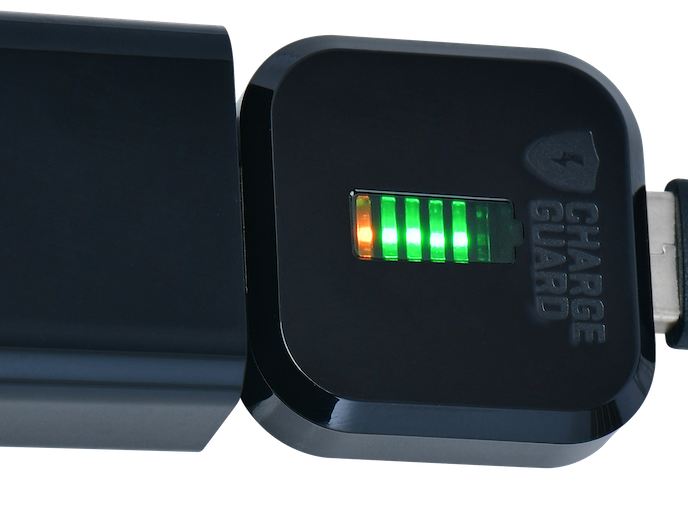Gadget to increase smartphone longevity
Norwegian engineer Aasulv Toennesland bought an electric Tesla car in 2014 and was fascinated by the charging and battery management system, which enabled the manufacturer to guarantee the battery for 8 years. It led him to wonder if a solution could improve the longevity of smartphone and tablet batteries that often have people replacing expensive devices prematurely. “He discovered they were far from optimised to make the battery last,” says Vidar Mortensen, the coordinator of the EU-funded Optium project. “Battery replacement has also become more difficult as it is being integrated into the phone itself.” Toennesland’s research set him on the path to invent ChargeGuard, a device that prolongs the life of smartphone and tablet batteries by controlling the charging process. The device also reduces the risk of fire by stressing the battery cell less. It also warns of dangerous temperature changes. The company www.getchargeguard.com (ChargeGuard) is now ready to commercialise it by the summer, thanks to the 6-month Optium project. The basic technology and device were invented in 2016. During the Optium project, the company further developed its user interface after testing among young smartphone owners, businesses and parents worried about fire accidents due to battery overheating. Initially, some of the users found ChargeGuard’s app interface a bit complicated, so the developers refined it.
Global distribution
As a result, the start-up of four people is negotiating with two global distributors. Based on estimated sales numbers, the company forecasts an annual profit of EUR 14 million by 2024, with a return on investment of 730 %. “The project has helped us with the current investment round and that will enable us to hire more people,” says Mortensen. ChargeGuard sits between a charger and a smartphone or tablet and controls the charging process by monitoring the charging current, battery level and temperature of the phone. It will artificially cap the battery capacity a little compared with the manufacturers’ settings, but testing shows that after 2 to 3 months the battery will be holding a longer charge than a non-ChargeGuard protected device. In addition to the phone lasting longer between charges, a better battery life will mean many people can keep their phones for more time. Extending the lifespan of smartphones and other electronics by just 1 year would save the EU as many carbon emissions as taking 2 million cars off the roads annually, found a study by the European Environmental Bureau(opens in new window). Travellers told Optium researchers they worried about using public charging spots since malware can infect phones through the USB port while charging. But the Optium team modified ChargeGuard to ensure it would not let such malware pass on through to the phone or the tablet. The ChargeGuard developers are now working to integrate their technology into chargers and power bank products directly. “For many safety and environmentally minded people, ChargeGuard will be something completely new and exciting,” says Mortensen.







